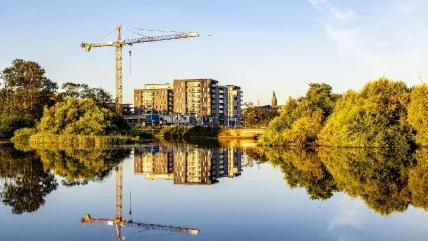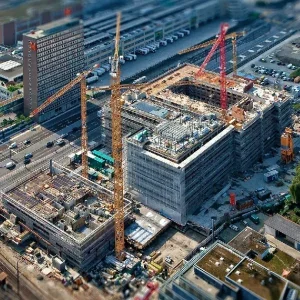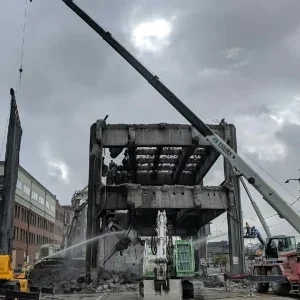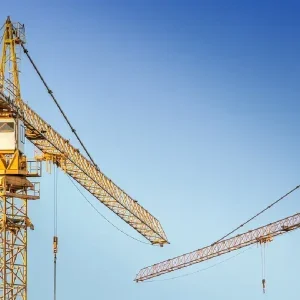
Introduction
The cranes industry, a vital component of modern construction, infrastructure, and logistics, finds itself increasingly affected by a global issue: biodiversity loss and ecosystem collapse. While the immediate connection between heavy machinery and environmental sustainability might not be obvious, the intricate linkages between industrial activities and natural habitats underscore the significance of this issue. As biodiversity continues to diminish at an alarming rate, the repercussions for industries dependent on natural resources, stable climates, and healthy ecosystems become more evident. This article delves into the facets of biodiversity loss, ecosystem collapse, and their direct and indirect impacts on the cranes industry, highlighting the necessity for sustainable practices and strategic adaptation.
Understanding biodiversity loss and ecosystem collapse
What is Biodiversity?
Biodiversity encompasses the variety of life on Earth, including species diversity, genetic diversity, and ecosystem diversity. It ensures ecosystem resilience, enabling natural systems to recover from disturbances, maintain ecological balance, and provide essential services such as clean air, water, and fertile soil.
Causes of Biodiversity Loss
Biodiversity loss is driven by several interrelated factors:
- Habitat Destruction: Urbanisation, deforestation, and land conversion for agriculture reduce natural habitats.
- Climate Change: Altered weather patterns and temperature extremes disrupt habitats and species survival.
- Pollution: Chemical pollutants, plastic waste, and oil spills contaminate ecosystems.
- Overexploitation: Overfishing, hunting, and resource extraction deplete wildlife populations.
- Invasive Species: Non-native species introduced by human activities outcompete and displace native species.
Consequences of ecosystem collapse
Ecosystem collapse occurs when an ecosystem undergoes significant degradation, losing its structure, function, and ability to sustain life. This can result in:
- Loss of Biodiversity: Reduced species richness and genetic diversity.
- Disruption of Ecosystem Services: Compromised provision of services such as pollination, water purification, and carbon sequestration.
- Increased Vulnerability: Greater susceptibility to natural disasters and climate extremes.
- Economic Impacts: Decreased availability of natural resources and increased costs for mitigation and adaptation.
Impacts on the cranes industry
Resource availability and supply chain disruptions
The cranes industry relies heavily on a stable supply of raw materials such as steel, aluminium, and other metals. Ecosystem collapse can disrupt mining operations and the extraction of these resources, leading to supply shortages and increased material costs. For instance, the degradation of forest ecosystems in areas rich in mineral deposits can hinder mining activities due to stricter environmental regulations and loss of access to these regions.
Climate change and operational challenges
Climate change, exacerbated by biodiversity loss, poses significant challenges to the cranes industry. Extreme weather events such as hurricanes, floods, and heatwaves can disrupt construction schedules, damage equipment, and increase operational risks. Cranes, which are often deployed in exposed environments, are particularly vulnerable to such events. The increased frequency and intensity of natural disasters necessitate enhanced safety protocols and more resilient machinery, driving up operational costs.
Regulatory and compliance pressures
As the global community becomes more aware of the environmental impacts of industrial activities, regulatory bodies are imposing stricter environmental standards and compliance requirements. The cranes industry must adapt to these regulations, which may include mandates for reduced emissions, sustainable sourcing of materials, and environmental impact assessments for construction projects. Non-compliance can result in legal penalties, project delays, and reputational damage.
Market and consumer demand shifts
There is a growing demand for environmentally responsible practices within the construction and logistics sectors. Companies in the cranes industry are increasingly expected to demonstrate their commitment to sustainability through the adoption of green technologies, energy-efficient machinery, and eco-friendly project management practices. This shift is driven by both regulatory pressures and consumer expectations, necessitating significant investment in research and development to meet these demands.
Strategies for Mitigating Impact
Sustainable sourcing and material management
To mitigate the impact of biodiversity loss, the cranes industry can adopt sustainable sourcing practices. This includes:
- Certified Materials: Using materials certified by sustainable forestry and mining initiatives.
- Recycling and Reuse: Implementing programs for recycling metals and repurposing old equipment.
- Supply Chain Audits: Conducting thorough audits to ensure suppliers adhere to environmental standards.
Technological innovations
Investing in technological innovations can enhance the sustainability of crane operations. Examples include:
- Electric and Hybrid Cranes: Reducing reliance on fossil fuels and lowering emissions.
- Smart Cranes: Utilising IoT and AI to optimise operations, enhance safety, and reduce environmental impact.
- Predictive Maintenance: Employing advanced diagnostics to extend equipment life and minimise downtime.
Environmental Impact Assessments
Conducting comprehensive environmental impact assessments (EIAs) before commencing projects can help identify potential adverse effects on local ecosystems and biodiversity. Mitigation measures can then be developed, such as creating wildlife corridors, implementing erosion control strategies, and restoring affected habitats post-construction.
Corporate Social Responsibility (CSR) Initiatives
Embracing CSR initiatives that focus on environmental conservation can enhance a company’s reputation and stakeholder trust. Activities may include:
- Community Engagement: Partnering with local communities to support conservation efforts and sustainable development.
- Biodiversity Offsetting: Investing in projects that restore biodiversity in other areas to offset the impact of construction activities.
- Educational Programmes: Raising awareness about biodiversity and ecosystem health among employees and stakeholders.
Case studies and industry best practices
Siemens Gamesa: pioneering sustainable practices
Siemens Gamesa, a leading player in the renewable energy sector, has integrated sustainability into its operational framework. By investing in green technologies and sustainable supply chain practices, the company has minimised its ecological footprint. Siemens Gamesa’s approach includes rigorous environmental assessments and collaboration with local communities to protect biodiversity during wind farm construction.
Liebherr: innovating for a sustainable future
Liebherr, a global manufacturer of construction machinery, has developed a range of electric and hybrid cranes aimed at reducing environmental impact. The company’s commitment to sustainability is reflected in its investment in research and development, focusing on energy efficiency and reduced emissions. Liebherr’s smart crane technology also optimises performance and minimises operational disruptions due to environmental factors.
Skanska: leading the way in sustainable construction
Skanska, a multinational construction and development company, has implemented extensive sustainability measures across its projects. The company’s green construction practices include the use of recycled materials, energy-efficient machinery, and biodiversity conservation initiatives. Skanska’s proactive approach to environmental management sets a benchmark for the cranes industry, demonstrating how large-scale projects can be completed sustainably.
Future Outlook and Industry Adaptation
The cranes industry must continuously evolve to address the challenges posed by biodiversity loss and ecosystem collapse. This requires a multi-faceted approach involving technological advancements, regulatory compliance, and stakeholder engagement. Key areas of focus for the future include:
- Innovation in Eco-Friendly Technologies: Ongoing development of electric and hybrid cranes, along with advancements in AI and IoT, will be crucial in reducing the industry’s environmental footprint.
- Collaborative Efforts: Partnerships with environmental organisations, governments, and communities can drive collective action towards biodiversity conservation.
- Sustainability as a Core Business Strategy: Integrating sustainability into the core business strategy ensures long-term viability and resilience against environmental disruptions.
The cranes industry stands at a critical juncture where proactive adaptation and commitment to sustainability will determine its future success. By addressing the impacts of biodiversity loss and ecosystem collapse, the industry can not only mitigate risks but also contribute to global environmental goals, ensuring a sustainable and prosperous future for all.
Conclusion
The interdependence between biodiversity, ecosystem health, and industrial activities underscores the importance of sustainable practices in the cranes industry. As biodiversity loss and ecosystem collapse continue to pose significant challenges, the industry must adopt innovative solutions and robust strategies to mitigate these impacts. Embracing sustainability not only ensures regulatory compliance and operational efficiency but also enhances corporate reputation and stakeholder trust. By prioritising environmental stewardship, the cranes industry can play a pivotal role in safeguarding the planet’s ecological balance while driving economic growth and development.






